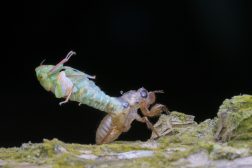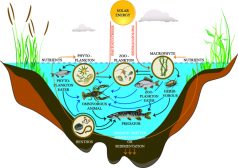Definition
noun
(taxonomy) A subdivision of the class Mammalia comprised of mammals laying eggs rather than giving birth to live young
Supplement
The class Mammalia pertains to any of the endothermic vertebrates identifiable by the following characteristics: a neocortex, three middle ear bones, a lower jaw made of a single bone, a hairy body covering, a thoracic diaphragm, a four-chambered heart, and females that are mostly viviparous. This taxonomic class can be subdivided into three: (1) Placentalia (placentals), (2) Monotremata (monotremes), and (3) Marsupialia (marsupials).
Monotremata or the monotremes are distinguished from other mammals by laying eggs rather than giving birth to live young. They have a cloaca wherein the ducts of the urinary, genital, and alimentary systems terminate, similar to birds. There are only two kinds of monotremes in the world, echidnas and platypuses. Both of them can be found living in Australia, Tasmania, and New Guinea. They do not have well defined nipples. The mothers lactate their young through the openings on their skin connected to the mammary glands.
Word origin: Greek monos (one) + trema (hole, i.e. referring to the cloaca)
Scientific classification:
- Kingdom: Animalia
- Phylum: Chordata
- Clade: Synapsida
- Class: Mammalia
- Subclass: Yinotheria
- Infraclass: Australosphenida
- Order: Monotremata C.L. Bonaparte, 1837
Other common name(s):
Compare:
- Marsupialia
- Placentalia
See also:







